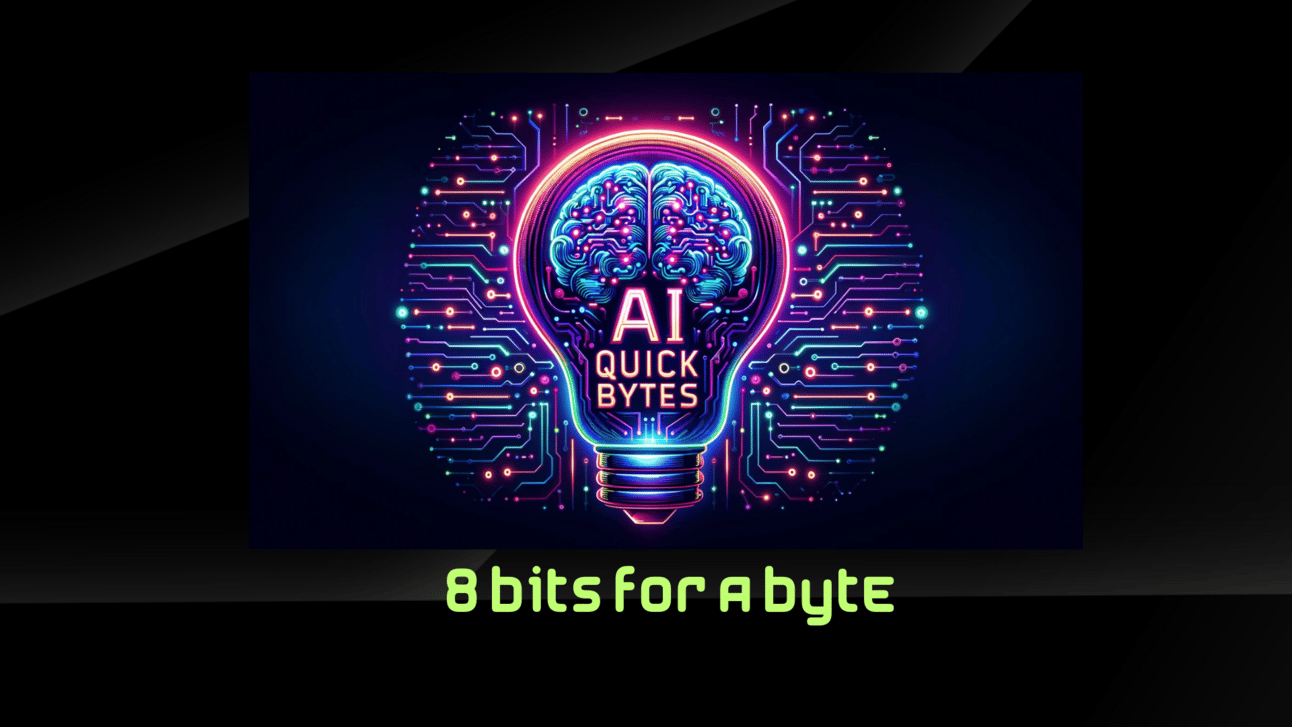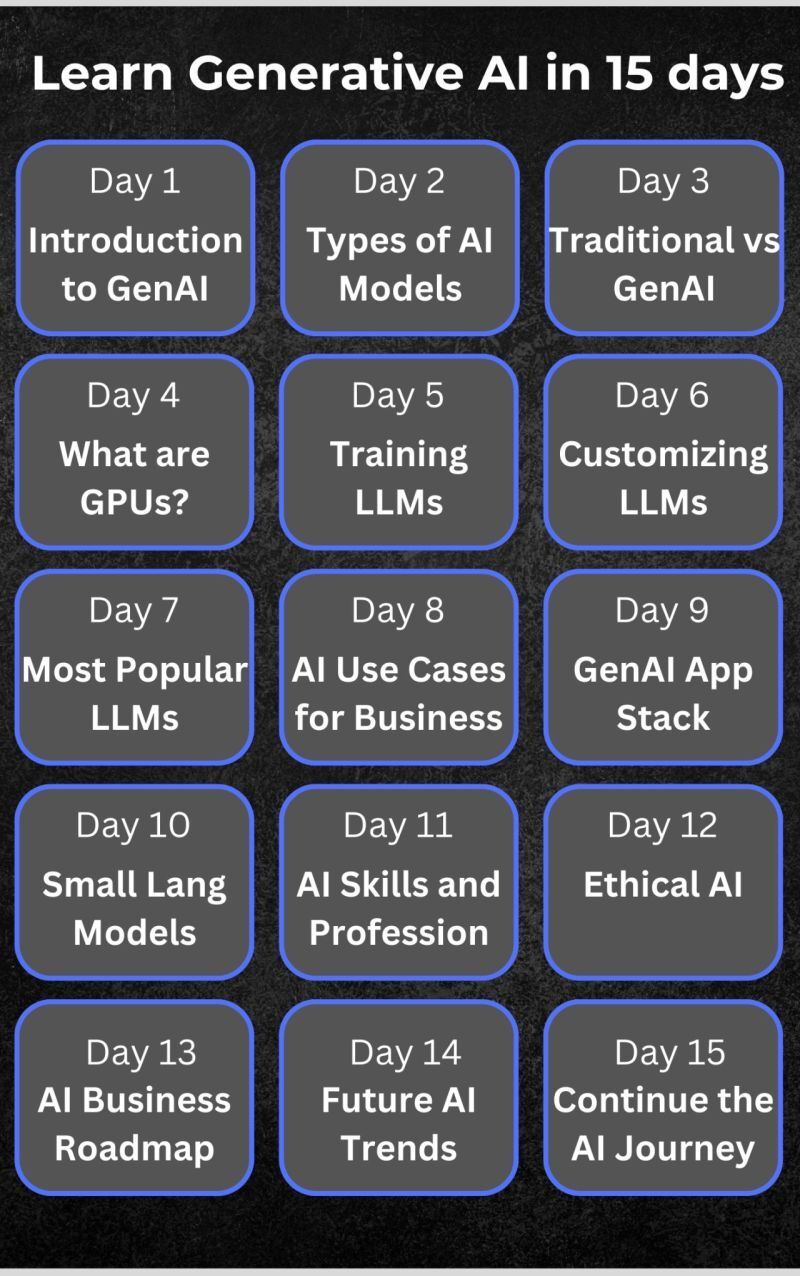8 bits for a Byte: 🚀 The AI landscape is experiencing its "iPhone moment" - but this time, it's not about flashy interfaces or consumer apps. Inside Silicon Valley's top AI labs, a quiet revolution is brewing: the shift from pattern-matching AI to genuine reasoning machines. While ChatGPT impressed us with fast answers, industry titans like Anthropic's Dario Amodei and OpenAI's leadership are now racing to crack "System 2" thinking - AI that can truly stop, reflect, and reason. This isn't just another tech upgrade; it's a $1 trillion market reinvention that's already sending shockwaves through California's regulatory landscape and forcing CEOs worldwide to rethink their AI strategies. What Anthropic calls "Machines of Loving Grace" could rewrite the rules of business, and this week's exclusive deep-dive reveals why major VCs are betting big on this transformation - plus what it means for your organization's survival in the age of thinking machines.
Writer RAG tool: build production-ready RAG apps in minutes
RAG in just a few lines of code? We’ve launched a predefined RAG tool on our developer platform, making it easy to bring your data into a Knowledge Graph and interact with it with AI. With a single API call, writer LLMs will intelligently call the RAG tool to chat with your data.
Integrated into Writer’s full-stack platform, it eliminates the need for complex vendor RAG setups, making it quick to build scalable, highly accurate AI workflows just by passing a graph ID of your data as a parameter to your RAG tool.

Let’s Get To It!

Welcome, To 8 bits for a Byte!
Here's what caught my eye in the world of AI this week:
Executive Summary:
Dario Amodei, CEO of Anthropic, argues that powerful AI has the potential to transform the world positively across multiple domains, from health to governance. While his company focuses on mitigating AI risks, Amodei emphasizes the need for an inspiring vision of AI's future, which could lead to unprecedented advancements if managed wisely. His essay outlines a hopeful scenario where AI accelerates progress, enhances quality of life, and promotes global equity, while acknowledging the importance of addressing the risks and ethical considerations associated with AI deployment.
Key Points:
Unlocking Health and Scientific Progress
AI could compress decades of biological and medical research into mere years, potentially curing diseases, extending lifespans, and improving mental health.
By acting as "virtual scientists," AI systems could expedite discoveries and develop new treatments, creating a world where ailments like cancer and Alzheimer's become manageable or eradicated.
Economic and Societal Growth
AI has the potential to boost global economies, especially in developing nations, by optimizing logistics, enhancing productivity, and facilitating health interventions.
The technology could help bridge economic gaps, but it will require strategic global cooperation and careful navigation of political and social complexities.
AI for Governance and Democracy
Democracies could leverage AI to enhance governance, ensuring fairer legal systems and more effective public services, while countering authoritarian surveillance and propaganda.
To achieve a world where AI supports democracy and freedom, collective effort is needed to set ethical guidelines, balancing AI’s benefits with robust safeguards against misuse.
Amodei’s vision for AI is ambitious yet grounded, encouraging a balanced approach where hope and caution coexist, with all stakeholders playing a role in shaping a positive future.

Quote of the week

I have been a big fan of Joseph Campbell since I saw him interviewed by Bill Moyers. I have often quoted his “Hero’s Journey” arch-type when explaining the role of transformation in the Organization. 🌟 We stand at a remarkable threshold in the AI journey, one that reminds me of Joseph Campbell's insights about transformation in human narratives. As we move beyond simple pattern-matching AI into the realm of genuine machine reasoning, companies like Anthropic are pioneering what they call "System 2" thinking - AI that doesn't just react, but pauses to contemplate. This shift isn't merely technological; it represents a fundamental transformation in how machines process information and support human decision-making. Like every great journey of change, it challenges organizations to adapt and evolve. The question isn't whether to embrace this transformation, but how to navigate it wisely.

🌅 *It’s Sunday morning, and I’m walking my dogs—a peaceful ritual that lets my mind empty and spark new ideas.
What if we could take the wisdom of Dario Amodei (CEO, Anthropic) and Sam Altman (CEO, OpenAI), run their recent posts through NotebookLM, and create a compelling Audio Overview?
Imagine lively deep-dive discussions summarizing the key topics of thought leaders—packaged into an audio format you can digest on the go. That’s exactly what I did, and the result? Mind-blowing. 💥
Here are some quick notes for you to try this experimental feature yourself:
1. NotebookLM is more than a tool—it's like a digital assistant that understands context. Load up complex texts and watch it synthesize key ideas effortlessly.
2. Audio Overviews give your content a whole new dimension. It’s not just about reading anymore—now you can listen to thought leadership unfold in real-time.
🚀 Curious? Click the above link or Dualing Banjo image to learn more.


AI is at a critical juncture, much like social media was in its early days. Back then, no one could foresee how platforms would shape elections and public discourse. Today, we face a similar uncertainty with AI. Yes, there are risks, but preemptive over-regulation could stifle innovation—the very engine driving our progress. Even if there's a small chance (say, 10%) that these risks materialize, clamping down too hard could give our global competitors the edge. The real danger? Losing our lead in a race we can't afford to lose. We need smart, balanced regulation that fuels, not fumbles, our AI future.
Executive Summary:
California's SB 1047 aimed to regulate AI, addressing existential risks by imposing safety measures on companies. Despite support from key tech figures and unions, the bill faced strong opposition from major corporations and was ultimately vetoed by Governor Newsom. His reasoning that the bill didn't go far enough was widely criticized, with some suspecting political motives. The fight around SB 1047 signals a growing movement to address AI risks, hinting at future regulations.
Key Points:
1. Broad Support and Unexpected Alliances:
SB 1047 drew endorsements from diverse groups including Elon Musk, youth organizations like Encode Justice, and SAG-AFTRA.
This coalition helped frame the bill as a balanced approach to AI safety, pushing back against claims it was anti-innovation.
2. Strong Opposition from Big Tech and Political Figures:
Opponents included AI giants like OpenAI, Meta, and Google, who viewed the bill as overreach. High-profile critics like Nancy Pelosi and Marc Andreessen also played key roles.
The resistance highlighted fears of regulatory capture and potential stifling of smaller AI startups, but also hinted at underlying political dynamics.
3. Governor Newsom's Veto and Future Implications:
Newsom's veto, citing concerns over insufficient coverage, was seen by many as disingenuous and politically motivated.
Despite this setback, the debate solidified public awareness around AI risks, and advocates are preparing for more robust and possibly more radical legislation in the future.
Author - Scott Alexander

Executive Summary:
Two years into the Generative AI revolution, the focus is shifting from rapid, pre-trained responses ("thinking fast") to deeper, deliberate reasoning ("thinking slow") at inference time. This evolution marks a new era of AI capabilities, enabling more sophisticated and agentic applications. As foundational models stabilize among major tech players, the next race is on to scale reasoning and unlock new "killer apps" that can truly think through complex problems. Investors and innovators alike are eyeing the application layer as the most promising frontier, where AI can reshape services and create new markets.
Key Points:
1. Stabilization of the Foundation Layer:
The Generative AI market has consolidated, with key alliances like Microsoft/OpenAI and AWS/Anthropic driving the ecosystem. Scaled players dominate, making it harder for smaller entrants to compete.
The next evolution will build on these stable, powerful models, focusing on reasoning capabilities that go beyond basic pattern recognition.
2. Emergence of "System 2" Thinking:
Inspired by AlphaGo's deliberate, scenario-based approach, new models like OpenAI's "Strawberry" are pioneering inference-time compute, allowing AI to "stop and think."
This shift from reactive to reasoned responses aims to mimic human-like problem-solving, enabling breakthroughs in fields like coding, math, and complex, logic-driven tasks.
3. The Rise of Agentic Applications:
With enhanced reasoning, a new wave of "agentic" apps is emerging, designed to act more autonomously across diverse tasks—think AI-powered lawyers, work assistants, and software engineers.
This trend marks a shift from traditional software models, with companies now selling outcomes (e.g., tasks completed) rather than just software licenses, opening trillion-dollar opportunities in the services market.
Author - Sonya Huang and Pat Grady


Friday Funnies 🤣 . Perhaps not funny but it is going to be mind blowing!

Love to hear what you think about the above training. It is free and from Armand Ruiz VP of Product - AI Platform @IBM.

Seeking impartial news? Meet 1440.
Every day, 3.5 million readers turn to 1440 for their factual news. We sift through 100+ sources to bring you a complete summary of politics, global events, business, and culture, all in a brief 5-minute email. Enjoy an impartial news experience.


Barak Turovsky
Executive Summary:
The Generative AI revolution, sparked by the release of ChatGPT, has led to a surge in interest across industries, from content generation to knowledge management. Yet, the key question remains: how can we effectively monetize this technology? By understanding the strengths (fluency) and weaknesses (accuracy) of Large Language Models (LLMs), and evaluating use cases based on their stakes, we can identify practical and profitable AI applications. In the short to medium term, the most promising opportunities lie in use cases that balance fluency with manageable accuracy, supported by human intervention.
Key Points:
Fluency vs. Accuracy: The Decision Framework:
LLMs excel in producing fluent, human-like responses but can struggle with accuracy, especially in high-stakes scenarios where precision is critical.
Use cases should be evaluated based on the need for fluency, accuracy, and the risk level of incorrect outputs. High fluency tasks (like writing content) are low-stakes and ideal for current AI capabilities, whereas high-stakes, accuracy-driven tasks (e.g., business decisions) are more challenging.
Monetizing Generative AI: Short to Medium-Term Wins:
The best opportunities lie in use cases where AI can provide substantial productivity boosts with human oversight. Examples include drafting emails, presentations, and other creative tasks where users refine AI outputs.
This "AI + human" model offers practical implementation, allowing companies to charge a premium for improved efficiency while enhancing LLM accuracy through user feedback.
Navigating the AI Revolution: Early Stages with Vast Potential:
We are still in the early days of a transformative technology akin to the invention of electricity. The road to widespread adoption will require understanding the complexities of balancing fluency and accuracy in AI models.
By focusing on scalable, manageable use cases, companies can begin to harness AI’s potential, paving the way for more sophisticated applications as the technology matures.
Author - Barak Turovsky

There’s a reason 400,000 professionals read this daily.
Join The AI Report, trusted by 400,000+ professionals at Google, Microsoft, and OpenAI. Get daily insights, tools, and strategies to master practical AI skills that drive results.

Until next time, take it one bit at a time!
Rob
P.S.
Join thousands of satisfied readers and get our expertly curated selection of top newsletters delivered to you. Subscribe now for free and never miss out on the best content across the web!









